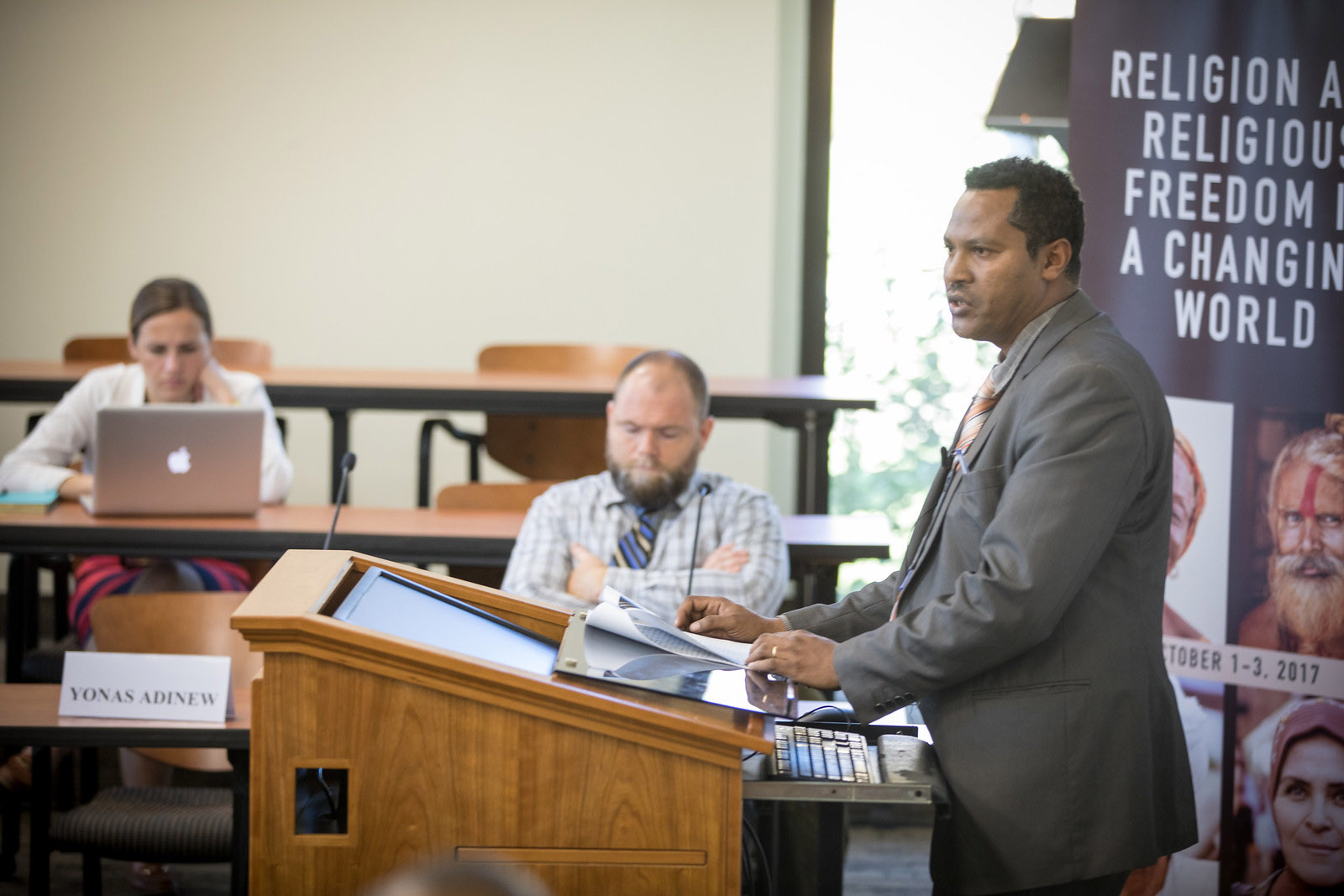Symposium 2017: Ethiopia

by Sara Plater, 2017 Symposium Executive Commitee Member and BYU Law Student
Peter Leman, Associate Professor of English at Brigham Young University, moderated the breakout session on Ethiopia hed on Tuesday morning, October 3, 2017. The speaker was Yonas B. Adinew, Head, Addis Ababa University School of Law.
Mr. Adinew shared a historical background of Ethiopia with the audience including information on the demographics of the country before speaking of the religious history.
Of the more than 80 ethnic groups in Ethiopia, the vast majority of the population subscribe to the Ethiopian Orthodox Church. Christianity came to Ethiopia during the 4th century. Consequently, this makes the country one of the first Christian nations in the world and Christianity has been embedded in the way of life of the nation including in its political, social, and economic spheres.
Muslims constitute the second largest religious group. Islam was introduced to Ethiopia during the 7th century when a group of followers of the Prophet Mohammed who were being persecuted in Arabia sought sanctuary in Ethiopia. Upon their arrival in Ethiopia, they were brought before the king who gave orders for the followers to be protected and cared for regardless of the fact that they were of a different religious orientation. Ever since, the two dominant religious traditions in Ethiopia have lived in peaceful co-existence.
Both the 1931 and the Revised 1955 Constitutions of Ethiopia declared Ethiopian Orthodox Christianity as the state religion. This made the Ethiopian Orthodox Church a very powerful institution. The declaration of the two constitutions has been a source of grievance of the Muslim community in the country which has long complained about alienation and discrimination.
In 1974, Emperor Haile Selassie was dethroned from power by a military coup led by a military junta called the Derg. The Derg declared Ethiopia a Socialist Republic and dispersed with the 1955 Revised Constitution. The Derg confiscated properties belonging to the Ethiopian Orthodox Church and in 1987, established a constitution which repealed the Ethiopian Orthodox Church as a state religion.
The Ethiopian People’s Revolutionary Democratic Front (EPRDF) took power in 1991 after defeating the Derg. The 1995 Constitution which was adopted by the EPRDF led coalition government declared state and religion separate and said there shall be no state religion. The 1995 constitution also laid the foundation for religious pluralism. It made it possible for religious institutions to assume judicial power. This made it possible for the establishment of Shari’a courts both at federal and regional levels. Since the EPRDF government, many religions enjoyed a greater amount of freedom.
Nevertheless, Ethiopia started losing its reputation for peaceful co-existence of religions in recent times as a result of various conflicts which plagued religious communities in the country. The government has been complaining of growing trends of religious expansionism and violent conflicts. Unfortunately, there has been instances of burning of churches and killing, including the killing of imams.
Following the adoption of Civil Society (CSO) law in Ethiopia which banned civil society groups in the country from engaging in human rights advocacy, authorities now worry that religious institutions are being used to sow seeds of discord and disharmony among the public and hence, have interfered in the internal affairs of religious traditions. This is particularly manifested in heavy-handed responses to protests and in failing their own people at the helm of these religious institutions.
Moving forward, Mr. Adinew recommends fostering religious harmony and peaceful co-existence among the public, reversing and countering efforts of some groups to politicize religions, reserving limitations and restrictions on religious experiences, no longer using the courts to muzzle in issues of religious freedom.